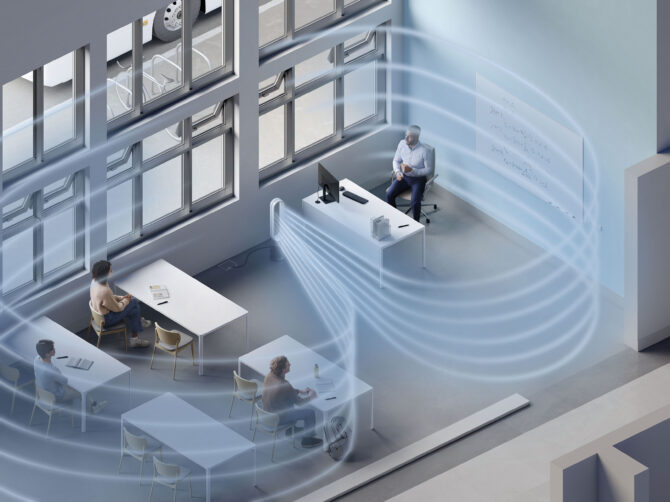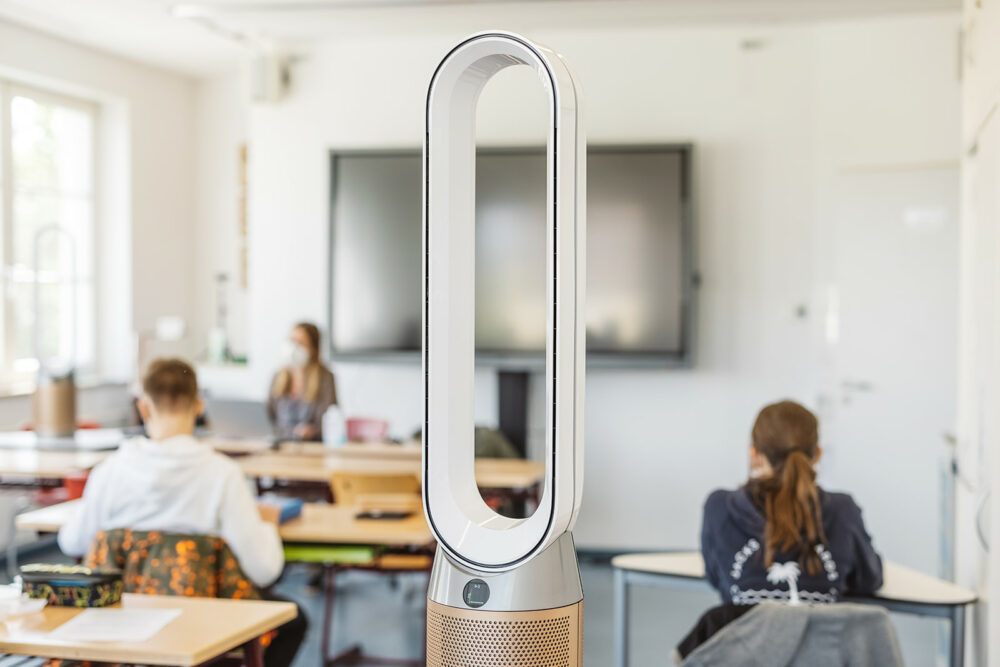Up to 49% of the UK population now report suffering from hay fever symptoms.1 This means almost half of the children and staff in your school could be affected, in one way or another, at this time of year. Beyond making people feel uncomfortable, hay fever can significantly affect quality of life, work and school performance – and attendance.
Summertime, for most people, is a happy time of year. But for hay fever sufferers, the high pollen count can cause many unpleasant symptoms – from itchy eyes and noses, to sneezing and wheezing. Could air purification be a solution?
Infiltration through open doors and windows means that pollen is often found within classrooms – airborne when disturbed. But as our schools become increasingly well-sealed, it may seem like we’re shutting pollution out. But in truth, we’re trapping it in.

When summer temperatures rise, so can pollution levels
According to the findings from a UK study, indoor air pollution can be up to five times worse than outdoor air pollution, and at its peak, can also be up to 560 times higher.2
Indoor air consists of a concoction of potentially dangerous volatile organic compounds (VOCs), including formaldehyde, as well as particulate matter, such as dust, bacteria, nitrogen dioxide and, of course, pollen.
Dyson’s latest DfE-approved purifier tackles pollen and cools
Dyson purifiers tackle the pollution inside classrooms we can’t see. Most are engineered with a filter and a fan, to draw a cocktail of air inside and circulate clean air back out.
Dyson’s latest model – the Dyson HEPA Cool Formaldehyde fan – is approved by the Department for Education. It purifies the whole room3 and cools pupils and staff to support a cleaner, more comfortable learning environment.
Its advanced 360° HEPA filter captures 99.95% of particles as small as 0.1 microns,4 which includes pollen, allergens, bacteria, the H1N1 virus5 – and even formaldehyde.6
1 A 2020 study by Allergy UK and Kleenex® suggests a surge in UK hay fever sufferers over the last few years.
2 European Respiratory Journal, October 2012 [LAST ACCESSED: 23.11.21]
3 In maximum setting. Tested for air projection (DTM 801) and purification coverage in an 81m³ room (TM-003711).
4 Tested for filtration efficiency at 0.1 microns (EN1822). Gas capture rates vary.
5 Whole machine tested by independent third-party laboratory Airmid (Ireland) in 28.5m³ test chamber pre-conditioned to 20±3C and RH 50±5%. Influenza A (H1N1) aerosolised in the test chamber and airborne concentration observed for the duration of 60 minutes under maximum Fan speed. Achieved 99% efficacy but real life efficacy may differ depending on actual environment and Fan speed. Tested on Influenza A (H1N1) only.
6 Third party full machine testing based on GB/T 18801-2018 formaldehyde cumulative clean mass testing with continuous injection until plateau of formaldehyde CADR is achieved. Results may vary in practice.
*https://find-dfe-approved-framework.service.gov.uk/list/air-cleaning
**This offer is only open to first 100 Schools (FCFS) interested to test ‘Schools Clean Air’ and get our Air Quality experts in touch helping your school to beat indoor pollution. A maximum of 1x unit of each product sample is available on a first come first serve basis. Offer is limited to ONE sample per delivery address. We are unable to amend delivery addresses and cannot send samples to incorrect addresses. Please make sure that your postage details are accurate when filling out the form. This offer is open to UK schools only. Once you have clicked you would like to try & successfully filled in the form, you will be contacted within a week of the promotions closing date to confirm that your sample is on the way. Non-return sample.
Offer ends 08/07/2022.
















Your thoughts